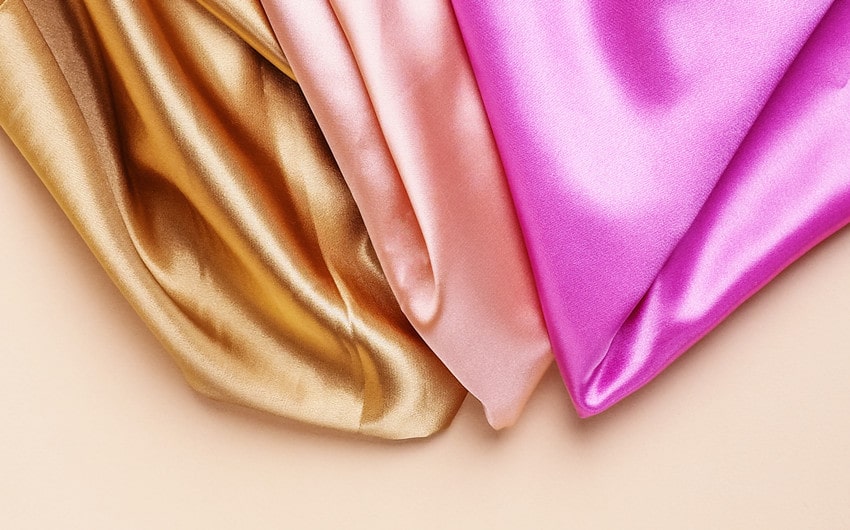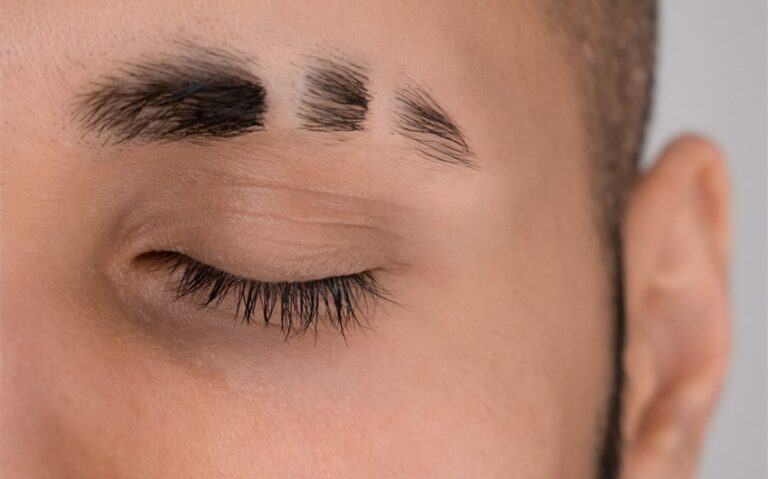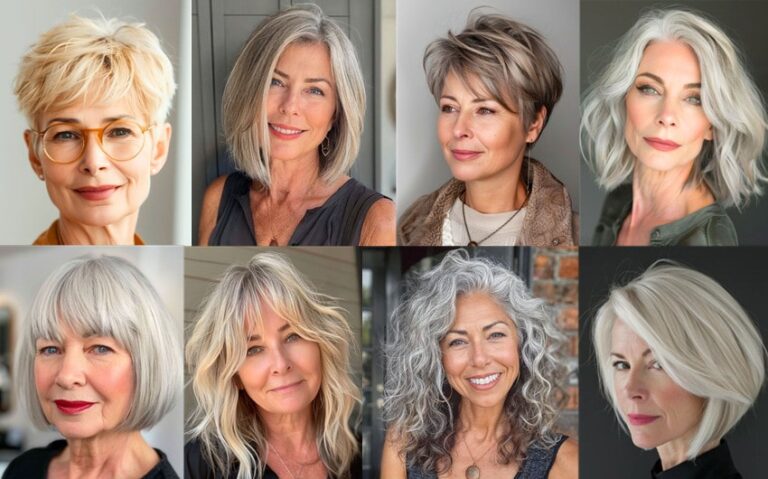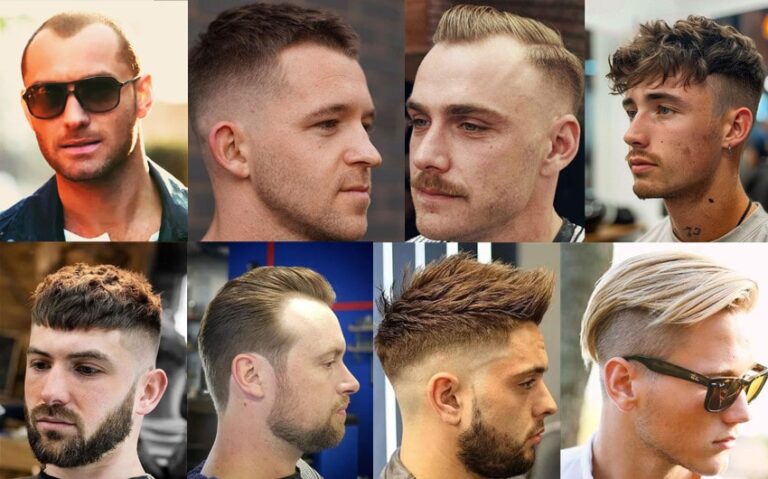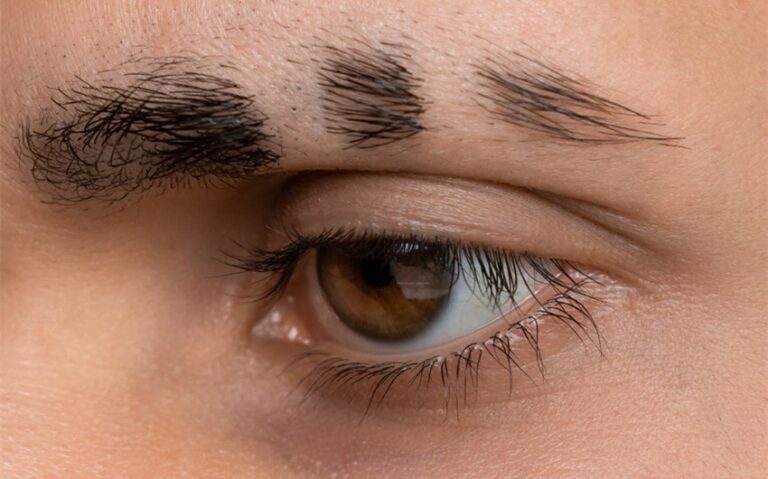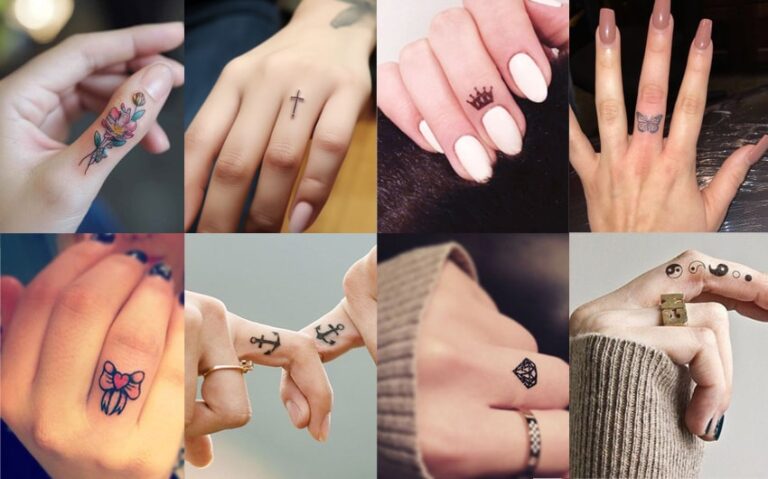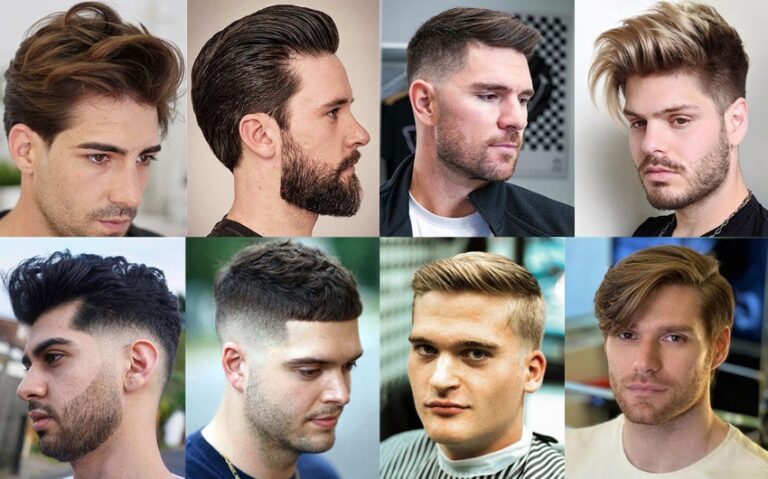Ultimate Guide to 22 Types of Silk Fabric with Names and Pictures
Silk is known for its softness, shine, and elegance, making it a favorite fabric for everything from clothing to home decor. But did you know that there are many different types of silk, each with its own feel and look? Whether you’re looking for something light and airy or strong and luxurious, there’s a perfect silk for every project.
In this article, you’ll find different types of silk fabric with names and pictures to help you discover which one suits your needs, making your next fashion or home choice a little easier.
Types of Silk Fabrics with Names and Pictures
1. Mulberry Silk
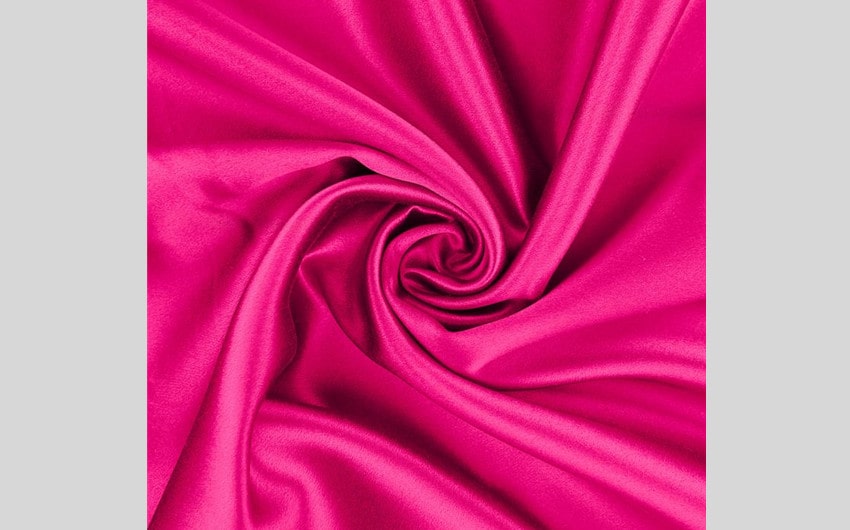
Image source: Pinterest
Mulberry silk is considered the highest quality silk available, made from the silkworms of the Bombyx mori moth, which are fed exclusively on mulberry leaves. This results in a smooth, shiny, and durable fabric that has a natural sheen.
Mulberry silk is also highly breathable, hypoallergenic, and known for its strength—it’s one of the strongest natural fibers. The long, fine fibers give this silk a luxurious feel, making it popular in luxury bedding and high-end fashion. Its softness and gentle texture are ideal for sensitive skin.
Common Uses: Luxury bedding, high-end clothing, scarves, and bridal wear. Mulberry silk is often used in products like pillowcases and sleep masks due to its softness.
2. Tussah Silk (Wild Silk)
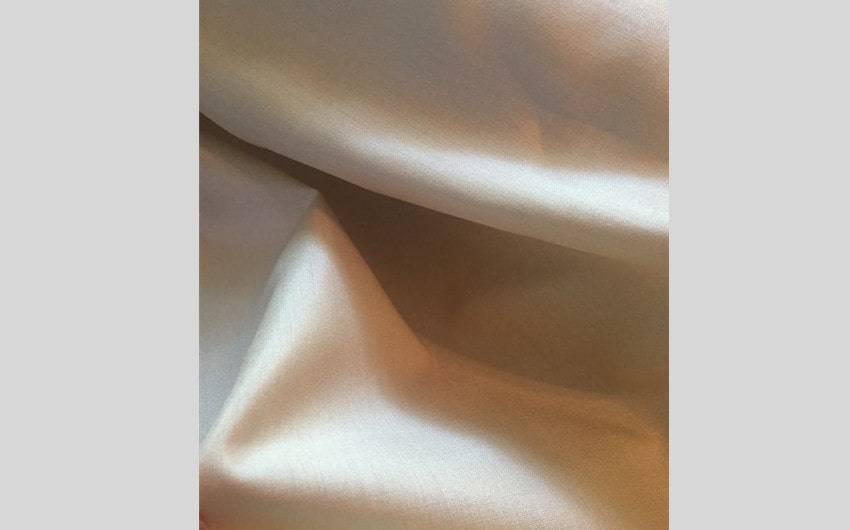
Image source: Pinterest
Tussah silk, produced by wild silkworms, has a naturally coarse texture and a more rustic appearance compared to Mulberry silk. The silkworms feed on various leaves such as oak and juniper, which results in the silk’s distinct tan or beige color. Because it is less processed, Tussah silk is known for its durability and strength.
It is often left in its natural state, unbleached and undyed, which gives it an eco-friendly appeal. Tussah silk’s irregular texture makes it popular in more casual or rustic designs, especially in outerwear and home textiles.
Common Uses: Outerwear, handbags, upholstery, and home decor. It’s often chosen for projects where durability is key, like curtains and cushion covers.
3. Eri Silk (Peace Silk)
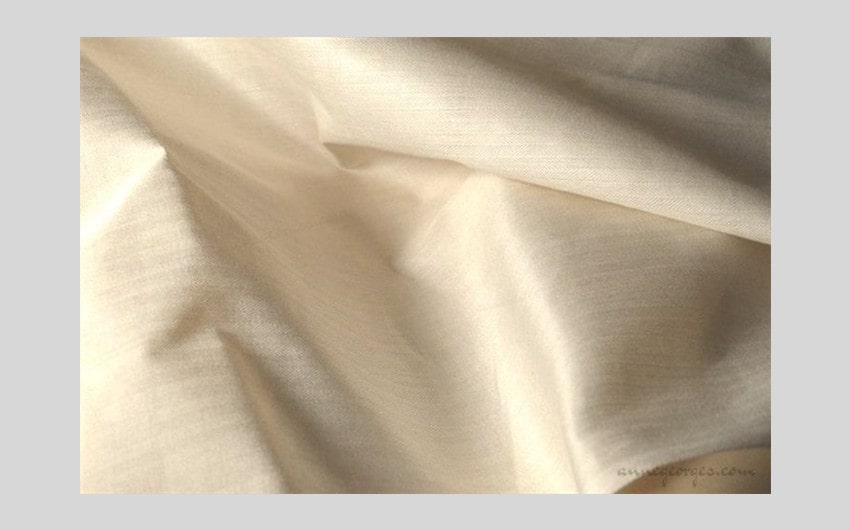
Image source: Pinterest
Eri silk is unique because its production allows silkworms to live, giving it the nickname “peace silk.” Originating in Assam, India, this silk is warm, soft, and slightly wool-like, making it perfect for cooler climates. The ethical process used in making Eri silk appeals to those seeking cruelty-free fashion choices.
It is highly durable and has a subtle, natural sheen, with a texture that feels soft yet robust. Its breathable nature and warm qualities make it popular for more casual and comfortable garments.
Common Uses: Scarves, shawls, sustainable clothing, and blankets.
4. Muga Silk
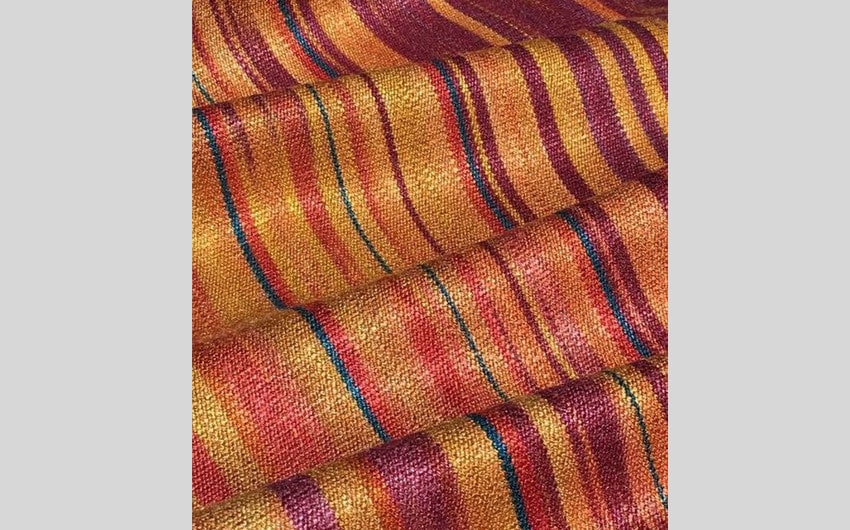
Image source: Pinterest
Muga silk is one of the rarest and most luxurious silks, native to Assam, India. Known for its natural golden sheen, it becomes even more lustrous with each wash, making it a highly durable and long-lasting fabric.
Muga silk has a rich cultural significance in India and is often used for traditional garments that are passed down through generations. Its natural golden hue and strength make it stand out among other silk types. This silk is often woven into intricate designs for high-end textiles and ceremonial garments.
Common Uses: Traditional Indian attire, luxury textiles, wedding garments, and sarees.
5. Charmeuse Silk
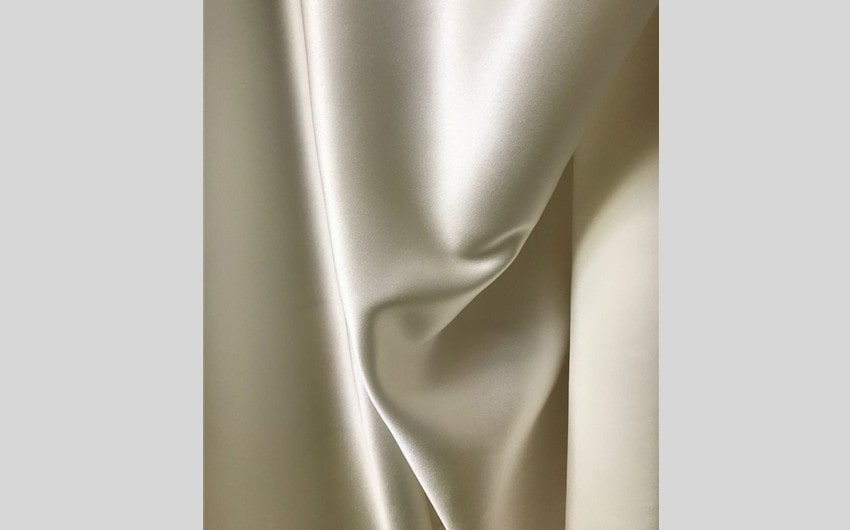
Image source: Pinterest
Charmeuse silk is recognized for its smooth and glossy texture on one side, with a matte finish on the reverse. Lightweight and soft, this silk drapes beautifully, making it ideal for garments that require fluidity and a luxurious feel. Charmeuse silk is often chosen for its high-gloss finish, which gives it an elegant and refined appearance.
It’s commonly used in garments that need to feel smooth against the skin, and its sheen adds a touch of glamour. Although similar to satin, Charmeuse is more breathable and comfortable to wear.
Common Uses: Lingerie, evening dresses, blouses, scarves, and luxury bedding.
6. Dupioni Silk
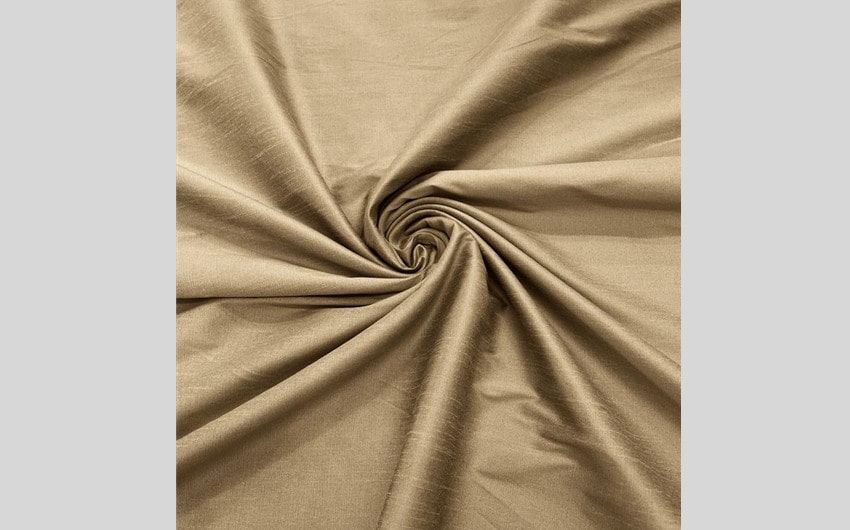
Image source: Pinterest
Dupioni silk is created from two silkworms spinning their cocoons closely together, which results in a thicker and more textured fabric. It is known for its characteristic slubs, or irregularities, which give the fabric a natural, coarse texture and a highly lustrous finish.
Dupioni silk is crisp to the touch and holds its shape well, making it an excellent choice for structured garments. Despite its stiffness, it has a luxurious sheen and is commonly used in formal and bridal wear. The natural texture of Dupioni silk also adds visual interest to any design.
Common Uses: Bridal gowns, formal attire, home furnishings, and evening dresses.
7. Habotai Silk
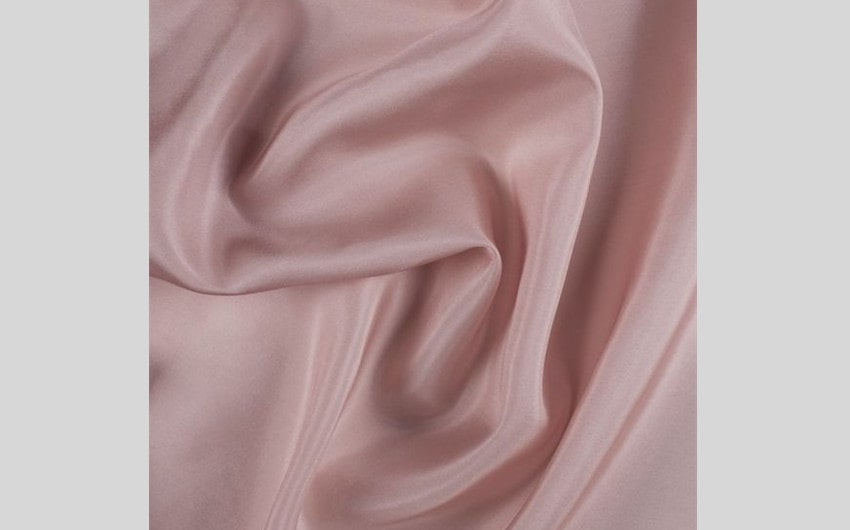
Image source: Pinterest
Habotai silk, often referred to as “China silk,” is one of the most lightweight and affordable types of silk. It has a soft and smooth texture, making it perfect for delicate garments and linings. Habotai silk has a subtle sheen and a flowing drape, which makes it popular for garments that require a lot of movement.
While it is not as glossy or luxurious as Charmeuse or Mulberry silk, its lightweight nature makes it versatile and comfortable to wear, especially in warm climates. It is often used in scarves, summer clothing, and lingerie.
Common Uses: Linings, scarves, lightweight clothing, and summer dresses.
8. Raw Silk
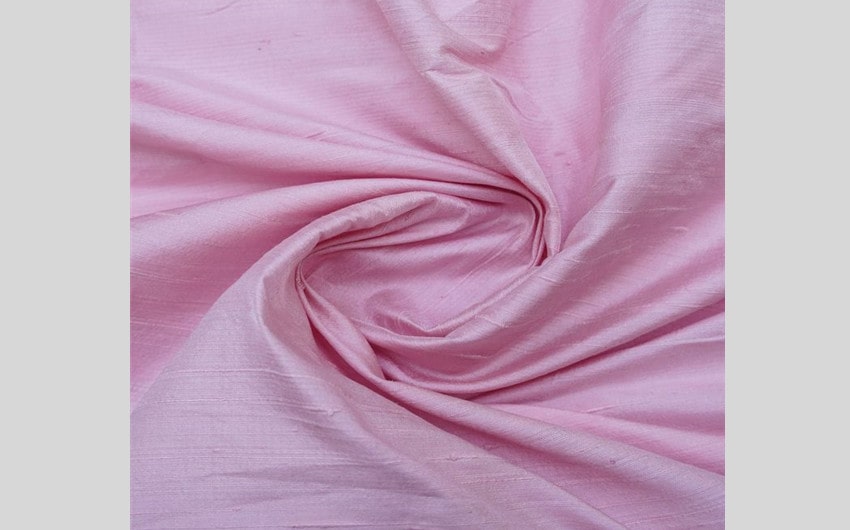
Image source: Pinterest
Raw silk is a more natural and textured form of silk that has not been fully processed to remove the sericin, a natural protein that gives the silk its slightly rough texture. This type of silk has a matte finish and is less lustrous than other silks, but its textured surface adds a unique aesthetic.
Raw silk is heavier and more durable, making it suitable for more structured or casual garments. Its natural look is often appreciated in eco-friendly fashion and home décor projects where a rustic appearance is desired.
Common Uses: Jackets, suits, casual clothing, and home décor.
9. Silk Chiffon
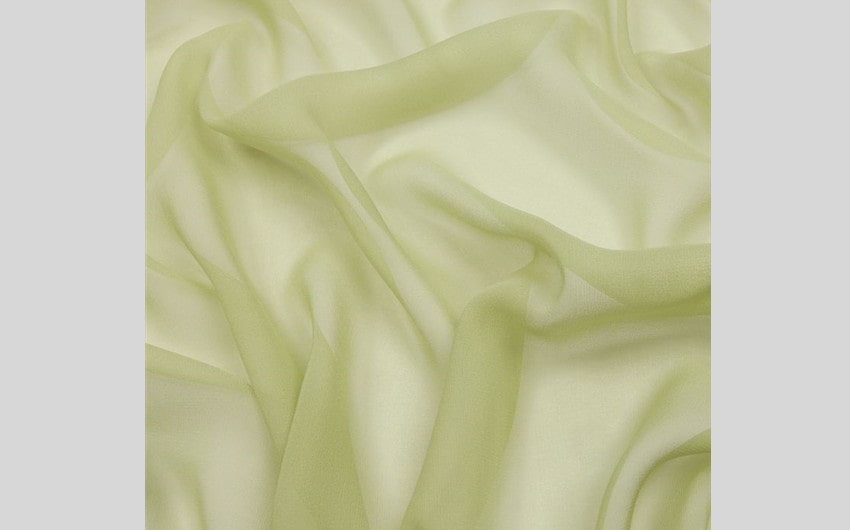
Image source: Pinterest
Silk chiffon is a lightweight, sheer fabric with a soft, slightly rough texture. It has a delicate, transparent quality and a beautiful drape, which makes it ideal for flowing garments. Due to its lightness, it is often used in layering for formal wear or evening dresses to create a soft, ethereal look.
Silk chiffon is less shiny than other silks but has a subtle, matte finish that adds elegance. Its delicate nature requires careful handling, but its floaty, airy quality makes it popular in high-end fashion.
Common Uses: Evening gowns, scarves, blouses, and wedding veils.
10. Silk Organza
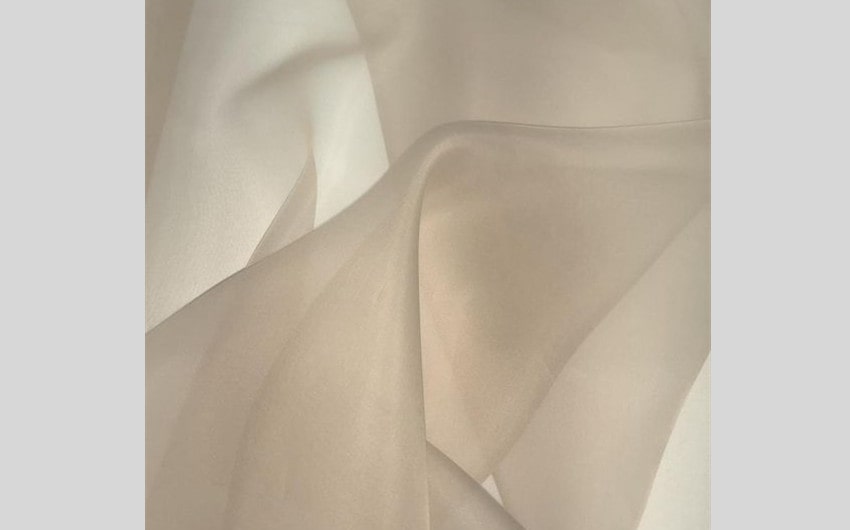
Image source: Pinterest
Silk organza is a crisp, transparent fabric known for its lightweight and stiff texture. Despite its delicate appearance, organza is quite durable and holds its shape well, making it a popular choice for structured garments and accessories. It is often used in bridal and evening wear to add volume and structure to dresses without adding weight.
The sheer quality of organza also makes it ideal for overlays and decorative accents. While it is stiffer than chiffon, its lightness and ability to create volume make it a favorite for more elaborate designs.
Common Uses: Bridal gowns, veils, evening dresses, and couture fashion.
11. Silk Georgette
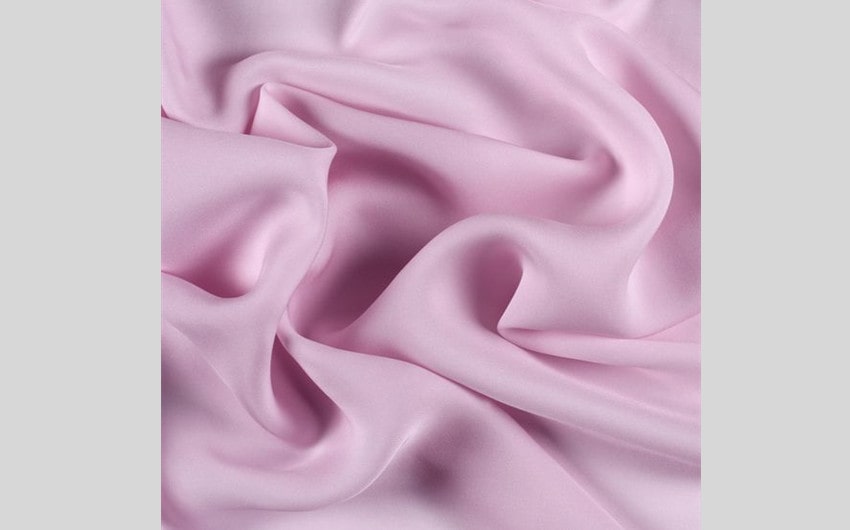
Image source: Pinterest
Silk Georgette is a lightweight, sheer fabric with a slightly rough and crinkled texture. It is less shiny than Charmeuse or Satin but has a more matte appearance, offering a soft, flowing drape. Georgette’s subtle texture and its ability to move elegantly make it popular for garments requiring a delicate, floating effect.
Despite its delicate appearance, it is a fairly strong fabric and can be layered or used as a base for heavier embroidery. Silk Georgette is often chosen for soft, romantic designs in both casual and formal wear.
Common Uses: Dresses, blouses, skirts, evening wear, and scarves.
12. Silk Velvet
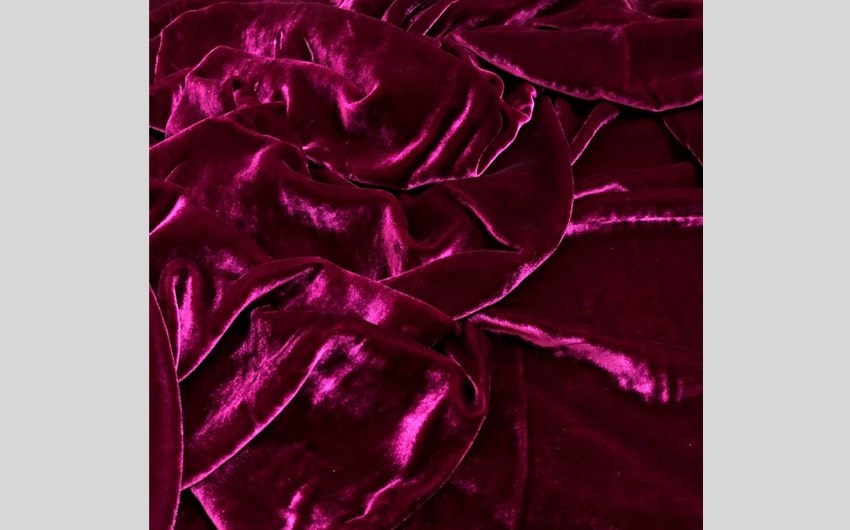
Image source: Pinterest
Silk velvet is one of the most luxurious fabrics, known for its soft, plush texture and rich appearance. It combines the shine of silk with the dense, tactile quality of velvet, making it both elegant and comfortable to wear. Silk velvet has a unique way of catching light, giving it a deep luster, which enhances its luxurious feel.
It is heavier than other silks and drapes beautifully, making it perfect for opulent evening gowns and outerwear. Due to its thickness, it is also commonly used in high-end upholstery and home décor.
Common Uses: Evening gowns, outerwear, upholstery, and luxury home décor.
13. Noil Silk
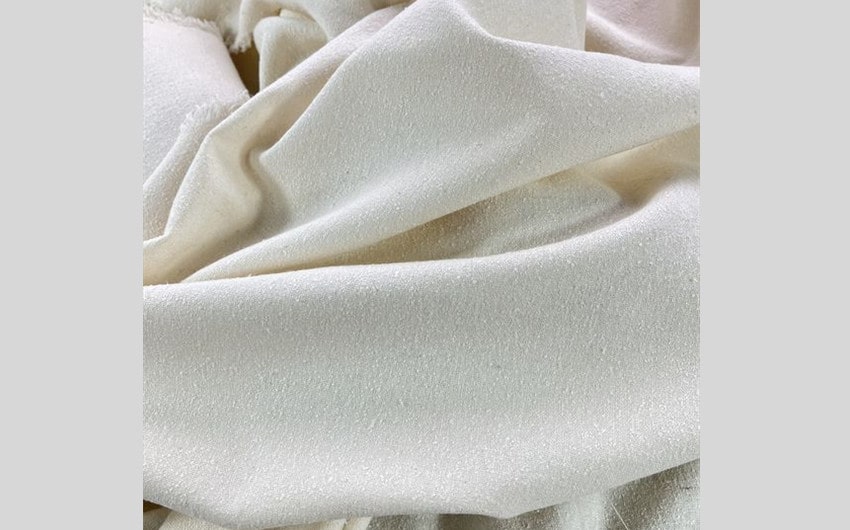
Image source: Pinterest
Noil silk, also known as raw silk, is made from the shorter fibers left after spinning, giving it a slightly nubby texture and a matte finish. It is less smooth and lustrous than more refined silks but is favored for its durability and soft feel. Noil silk is highly breathable and has a casual, understated elegance, often used in more laid-back, eco-friendly designs.
Its appearance is more rustic and natural, making it a great choice for those seeking a textured, earthy aesthetic in both clothing and home décor.
Common Uses: Casual wear, home textiles, lightweight jackets, and scarves.
14. Crêpe de Chine Silk
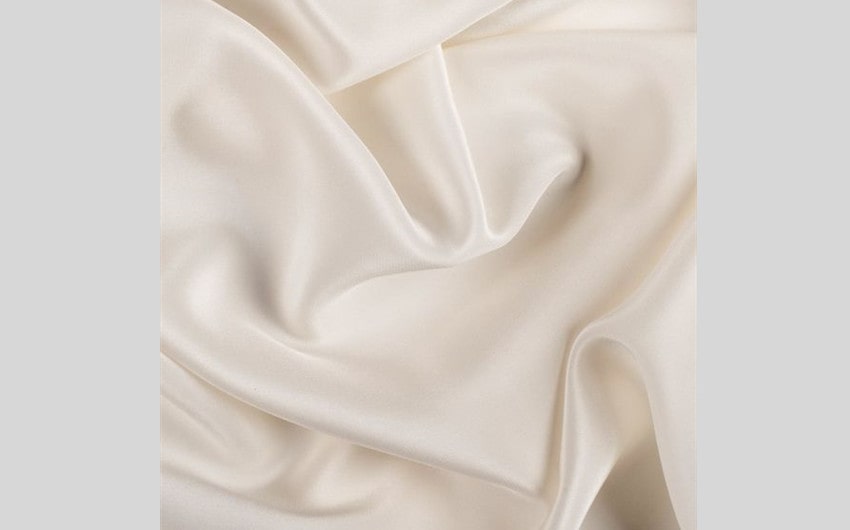
Image source: Pinterest
Crêpe de Chine is a lightweight silk with a slightly crinkled texture and a matte finish, which sets it apart from shinier silks like Satin or Charmeuse. It is soft, durable, and has a beautiful drape, making it ideal for flowing garments that require a natural, elegant look.
Crêpe de Chine is less prone to wrinkling compared to other silks, making it a practical option for everyday wear as well as formal outfits. Its subtle texture adds a refined elegance to blouses, dresses, and scarves without being overly glossy.
Common Uses: Blouses, dresses, scarves, lingerie, and lightweight formal wear.
15. Spider Silk
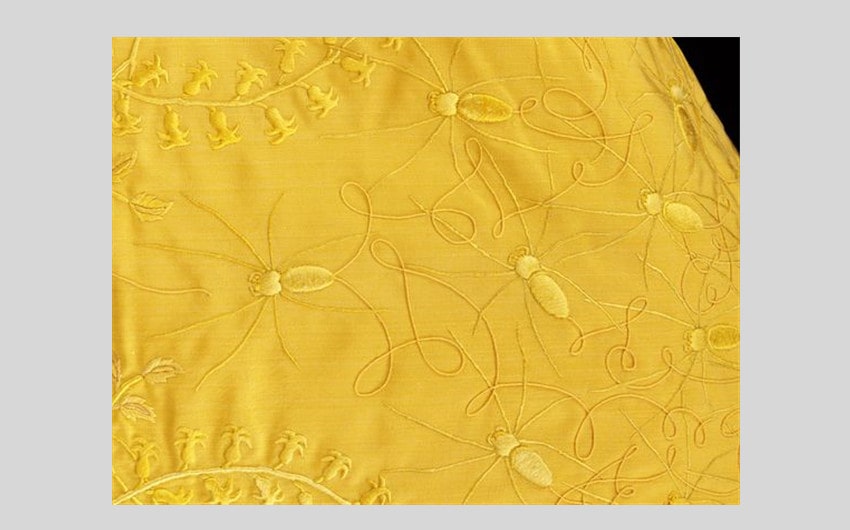
Image source: Pinterest
Spider silk is an extraordinary and rare fabric known for its remarkable strength, elasticity, and lightweight nature. Unlike traditional silks produced by silkworms, spider silk is harvested from spiders and is five times stronger than steel by weight. Due to the difficulty in mass-producing it, spider silk is extremely rare and expensive, and its use is typically limited to scientific research or specialty textiles.
However, innovations in biotechnology have allowed for synthetic spider silk production, expanding its potential applications in fashion, medical textiles, and high-performance fabrics.
Common Uses: Specialty textiles, scientific applications, and experimental fashion.
16. Faille Silk
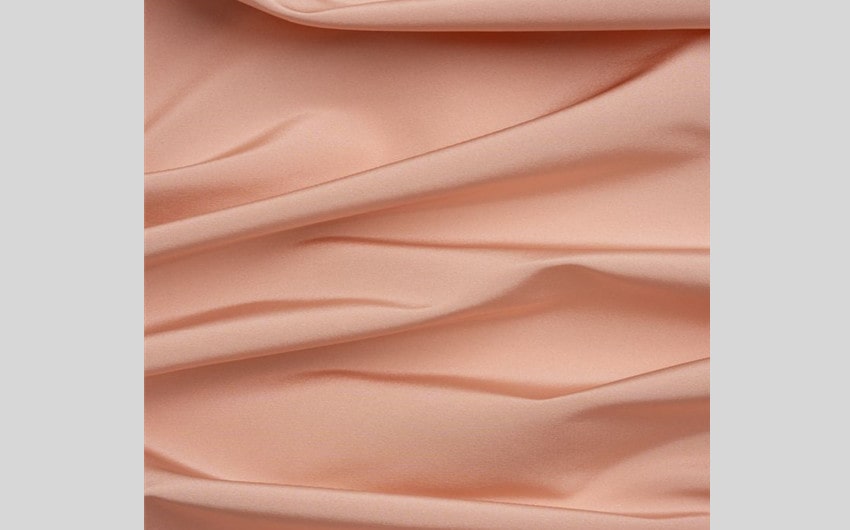
Image source: Pinterest
Faille silk is a soft, ribbed fabric with a slightly glossy surface, created through a process of weaving that gives it a distinct, finely ridged texture. The fabric is firm and has a structured drape, making it ideal for more formal or tailored garments. It’s not as shiny as satin or charmeuse, but its subtle sheen and unique texture offer a sophisticated look.
Faille is often used in high-fashion and evening wear, where structure and elegance are required. Its ability to hold its shape makes it a popular choice for bridal wear and elegant outerwear.
Common Uses: Evening gowns, bridal wear, formal jackets, and tailored garments.
17. Silk Mikado
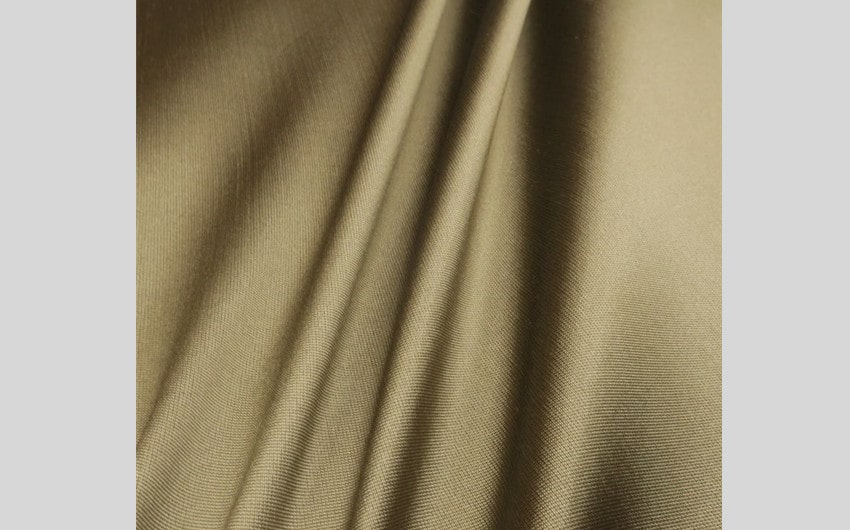
Image source: Pinterest
Silk Mikado is a blend of silk and nylon, giving it a slightly heavier weight with a crisp, structured feel. It has a subtle sheen that’s less reflective than satin, but its smooth finish gives it an understated elegance. Mikado silk holds its shape well, making it ideal for creating structured garments, particularly in bridal fashion and formal wear.
Its durability and luxurious appearance make it popular for garments that need to maintain their shape while also providing a sleek, polished look. The fabric’s weight and texture provide a clean, sculptural silhouette.
Common Uses: Bridal gowns, formal evening wear, tailored jackets, and couture fashion.
18. Silk Taffeta
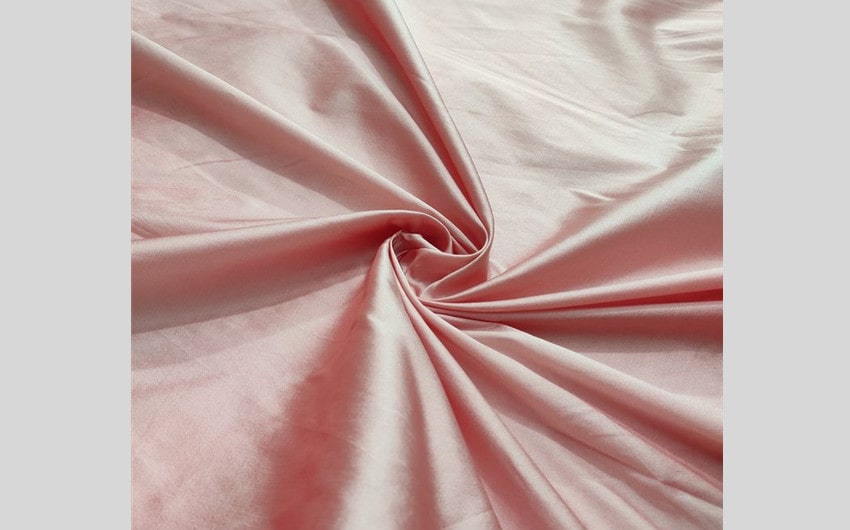
Image source: Pinterest
Silk taffeta is a crisp, smooth fabric known for its slightly stiff texture and rustling sound when moved. It has a fine weave and a lustrous surface, often used to create structured garments with a dramatic flare. Taffeta is commonly used in evening dresses and formal attire because of its ability to hold shape and add volume.
The fabric is lightweight yet firm, and its slight sheen adds an elegant touch to any design. Taffeta’s stiffness also makes it suitable for creating voluminous skirts, petticoats, and luxurious drapes in home décor.
Common Uses: Evening gowns, bridal wear, formal dresses, and home furnishings.
19. Silk Twill
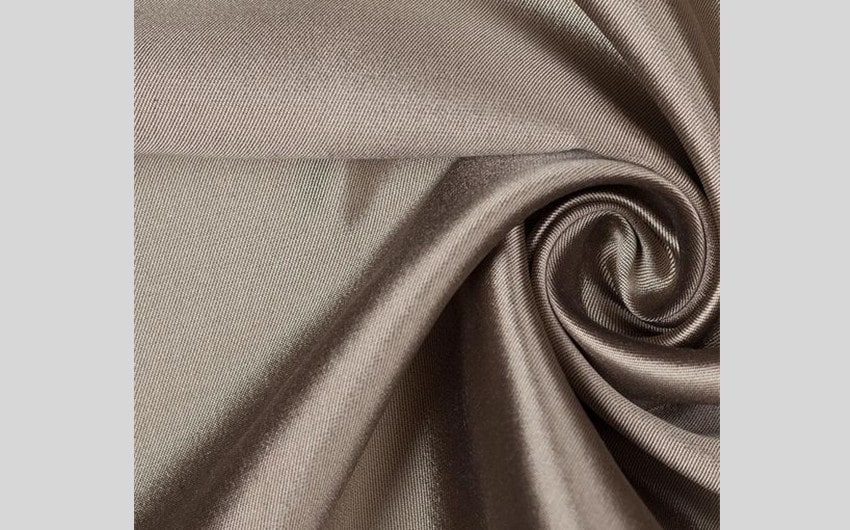
Image source: Pinterest
Silk twill is a sturdy fabric known for its characteristic diagonal weave pattern, which adds durability and a subtle texture to the fabric. It is softer than other strong silks like Dupioni, with a smooth finish and a slight sheen. Silk twill is often used in high-end accessories like scarves and ties because of its strength and ability to resist wrinkling.
The fabric is heavier than some silks, making it ideal for garments that require more structure, such as suits or outerwear. Its rich texture and versatility make it a favorite in luxury fashion.
Common Uses: Scarves, ties, tailored garments, suits, and outerwear.
20. Silk Jacquard
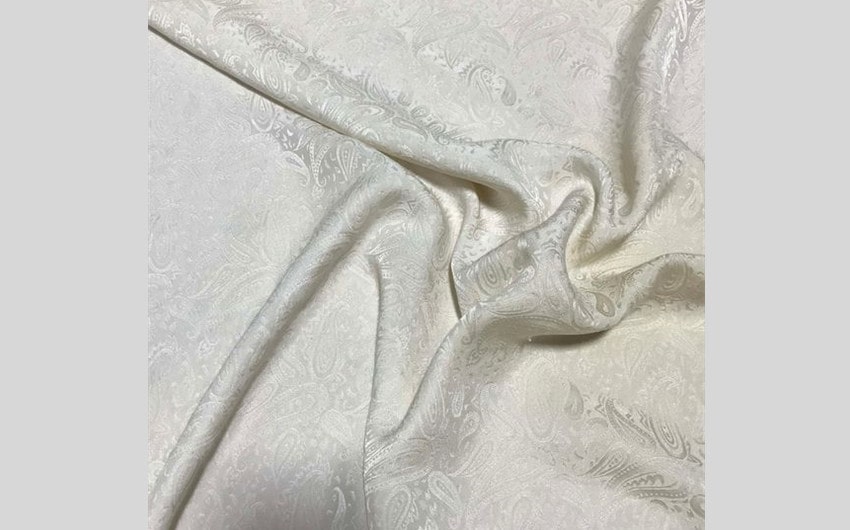
Image source: Pinterest
Silk Jacquard is a rich, textured fabric woven with intricate patterns, often floral or geometric, that are created directly in the weave rather than printed on the surface. This results in a luxurious, decorative fabric with a slightly raised texture. Jacquard weaving allows for complex designs, making the fabric popular for garments and home décor that require a statement piece.
The fabric can range from lightweight to heavier varieties, depending on the weave, but it always exudes a sophisticated, elegant look. Silk Jacquard is a favorite for high-end, ornate garments and accessories.
Common Uses: Formalwear, jackets, upholstery, and decorative home textiles like curtains and pillows.
21. Shantung Silk
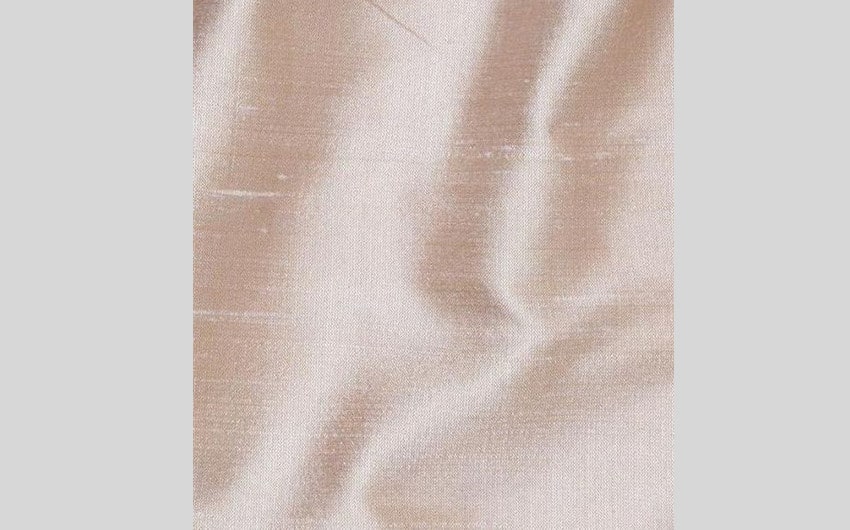
Image source: Pinterest
Shantung silk is similar to Dupioni silk, but it is lighter in weight and has fewer slubs, giving it a slightly smoother texture while still retaining a crisp, raw feel. It has a subtle sheen and a slightly nubby texture that makes it less formal than other silks like Charmeuse or Satin.
Shantung’s light weight and crisp structure make it ideal for garments that require some body without being too stiff. It is commonly used in bridal wear, evening gowns, and tailored jackets, where a blend of elegance and texture is desired.
Common Uses: Bridal gowns, formal jackets, cocktail dresses, and tailored clothing.
22. Silk Jersey
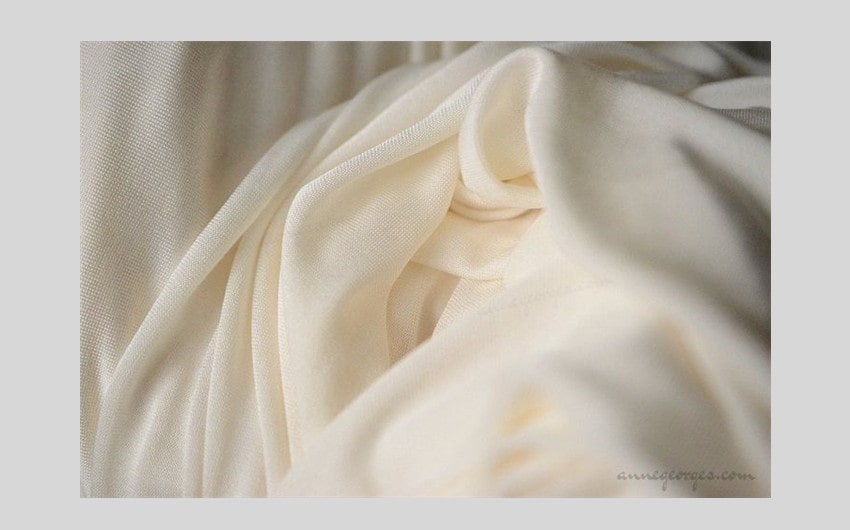
Image source: Pinterest
Silk Jersey is a knit fabric made from silk, which gives it a stretchy, soft texture while maintaining the luxurious feel of silk. It is incredibly comfortable and breathable, with a smooth finish that drapes nicely over the body. Unlike many other silk fabrics, Silk Jersey has a bit of stretch, making it perfect for garments that require flexibility and movement.
The fabric’s softness makes it a popular choice for casual yet luxurious clothing items like tops, dresses, and loungewear. Its lightweight nature also makes it ideal for layering.
Common Uses: Dresses, tops, loungewear, and casual yet elegant clothing.

